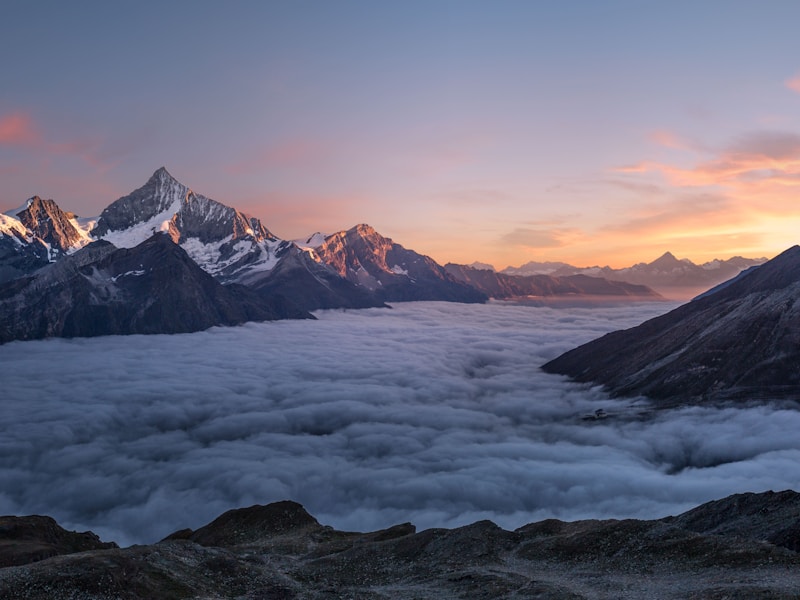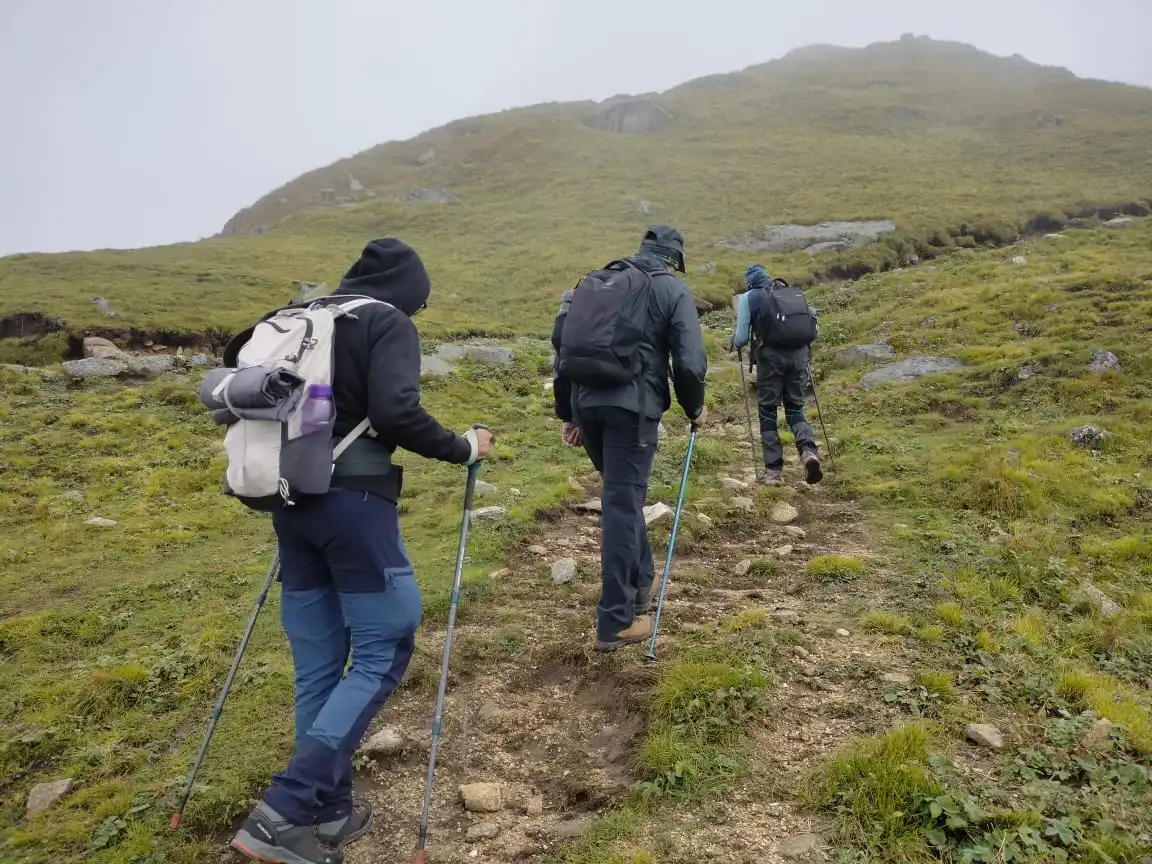Western Ghats trekking Myths and Facts
Western Ghats Trekking Tips and Facts

Imagine standing at the edge of the green forest of Western Ghats wrapped around by towering mountains, and the sound of chirping birds fills the environment. The Western Ghats is a UNESCO World Heritage Site and offers breathtaking trekking experiences. If you are an adventure lover and want to explore nature, then Western Ghats trekking should be on your wishlist. However, before embarking on this journey, it is essential to learn the myths and facts of the place. Numerous myths surround the Western Ghats, from dangerous animal myths to misconceptions about the difficulty levels.
The Western Ghats, also popularly known as Sahyadri Mountain Range, stretches over the six states in the country, covering around 1600 kilometers. It is home to rich biodiversity with an abundance of endemic species and animals. The region has unique geographical and ecological features and is one of the world's eight "hottest hotspots" of biological diversity. Let's debunk the myths and facts uncovering the fascinating trekking features in the Western Ghats. Lace-up your boots and prepare for an unforgettable journey in the enchanting wonderland.
Myths and Facts of the Western Ghats
Numerous trekking myths surround the Western Ghats, which sometimes mislead the trekkers in their journey. Trekking in South India is open all year to experience diversity. Trekkers enjoy all the natural wonders within the boundaries of the Western Ghats, including forests, hill stations, lakes, sanctuaries, etc. It is the package place for everyone who loves nature and is perfectly fine to call God's garden. Following are the best trekking myths and facts in the western ghats that leave every people awestruck and complete to enjoy the deep forests of these regions.
Summer treks in Western ghats: the UNESCO World Heritage Site
Western Ghat is known to be recognized as one of the UNESCO World Heritage Sites, among many other statues or monuments. On the other hand, it is the home to biological diversity for different regions to many species of plants, animals, insects, and birds; as per the latest counts, the place nurtures more than 9000 species of plants, 140 types of mammals, 500 birds, 6000 insects, and 250 species of aquatic animals.
Do you not find it enchanting as the wonder of nature? When people are nature enthusiasts, you can find the Western Ghats as the ideal location to spot all the natural beauties. However, numerous trekkers write and mention the ideal time to visit the Western Ghats in the post-monsoon months, like from October to September and December to February. Some people believe summer is not ideal for Western Ghats trekking because the temperature is soaring.
You may also like : Best monsoon treks in Maharashtra
Trekkers find it uncomfortable to continue their journey because of the unprecedented heat. However, this is not true because the Western Ghats remain open to all people throughout the year. Summer months get hot in the cities, but the trekking routes enjoy the cool breeze. Summer months are ideal for the Mullayanagiri and Chembra peak trek in the Western Ghats.
Trekking in Monsoon in Western ghats: Exploring waterfalls and blooms
Western Ghat has more than 500 hill stations and 1000 trekking trails, among which numerous still need to be discovered. Can you find such expansion anywhere else in India? The central hill stations in the green valleys include Ooty, Coorg, Munnar, and Mahabaleshwar atop the hulls of the Western Ghats. There are beautiful places that people can enjoy on their weekends and explore the beauties of hill stations. People will become happy by finding themselves amid enthralling mountain ranges.
It is not difficult to trek during monsoon because the Western Ghats receive heavy rainfall, but it only rains some days. Trekking in South India during the monsoon months is famous in the Western Ghats because it gives everyone a memorable experience. Unlike the Himalayan treks, monsoon treks in this place are complete within one day, which means trekkers can resume the journey without a raincoat or poncho.
The monsoon rain rejuvenates the Ghats after the scorching summer heat. The arid landscape transforms into a lush green valley with waterfalls and blooming flowers. The Ghats look pretty throughout the rainy season and are famous for the Harishchandragad trek, Sinhagad trek, Kalsubai monsoon Trek, Rajgad Fort trek, etc.
Also Check :Rajmachi Fireflies trek, Maharashtra
Safe or Dangerous: Wilderness and wildlife in Western Ghats
Western Ghat is the perfect example of rare beauty; people can always visit these places for their next destination. Besides seeing Purple frogs, people can locate some rare species within these dense forests. It might include the Malabar civet, bronze-back vine snake, and lion-tailed macaque. The wildlife sanctuaries and other national parks contain endangered species of plants and animals. Kumara Parvatha trek is the most difficult trek of Western Ghat, located in the Coorg district of Karnataka. It is the highest peak in this region, where the trekking trail is also known as the Pushpagiri trek, best trek in south India.
Mostly experienced trekkers follow this journey because the adventure takes through the densely forested land, rock climbing(huge volcanic rocks), and undiscovered flora and fauna. The trail is rough, and even experienced trekkers need help to cover it. It takes trekkers through the Pushpagiri Wildlife Sanctuary to get the thrill of a jungle vacation. It is located at an altitude of 1712 meters and takes around 10 hours.
One of the common myths among trekkers is that Himalayan treks are far more challenging than treks in the Western Ghats because of snow. On the other hand, the Western Ghats is home to the most challenging trails in our country. All the ascents are steeper than the Himalayan areas. For example, in the Chanderi Fort Trek, people can reach around 2000 feet within 3km, and treks like Alang Madan Kuneed have some technical expertise areas.
It is strongly advised that nobody should trek alone due to the vulnerability of these treks. It is always recommended to have at least one person tag along for safety reasons. Additionally, it is crucial to be prepared for various weather conditions such as monsoon, winter, or summer treks, as well as potential issues like insects, sunburns, and scratches.
Short Hikes to Epic Journeys
Western Ghat has the most wonder-lasting beautiful in the Shola forests, i.e., the Neelakurinji flower that blooms every 12 years. Tourists from all over the world gather in this place to witness the squashy grasslands being colored blue, maroon, and red. Eventually, after every 12 years, tourists can witness the beauty with their eyes and the majestic appearance of the lush green hills of Munnar. It is present in the Eravikulam National Park, where the flowers blooms in July end and stay still in October.
Western Ghat is the home to several one-day treks, but it also has longer journeys. Therefore, it is a myth that trekkers only trek in the Western Ghats when they have a short time in hand. Treks in this region are also challenging; they are curated so people can cover on the weekends. For example- the Trans Sahyadri trek (North Maharashtra to the Southern End of the Sahyadri hills) requires trekkers to walk for over a month.
There is no availability of cars or vehicles during the trekking journey. Also, there are Naneghat to Bhimashankar Trek and Baglan Circuit Trek in the Western Ghats. It is ideal for those trekkers who enjoy less commuted routes and are more secluded than the Himalayan treks.
Seeking assistance from local villagers or guides during the journey can also be beneficial. It is best to start the treks no later than 8 am, as starting late can dampen the excitement and make people feel lazy. Being knowledgeable about the trek and learning from the experiences of previous trekkers can help identify potential dangers. It is important to follow the instructions given by the guide and maintain self-dependence while on the trekking routes.
Beyond easy trails to technical expertise
The Western Ghats are known to be lengthier than the Alps mountain of Europe as it stretches from Gujarat to Tamil Nadu, beyond 1200 km. The entire range of mountains in the Ghats is more extensive than the countries of England, Denmark, and Bangladesh. The difficult trek of Sahyadri hills is the Alang Madan and Madangad at 4500-4900 ft. These two are the names of two hilltops requiring trekking over two days. Some trekkers also cover another peak with this known as Kulang, but it is recommended to reach there separately.
The trek requires physical fitness and technical expertise because of its advanced level. Kulang exciting hill spot, and trekkers should visit them before the monsoon season begins. People cover the trek to catch the thrilling sunset and sunrise view of the Sahyadri mountain. People can explore the caves atop the hills, but it gets colder at night, so trekkers should be prepared for the dynamic weather conditions. All the floating clouds and the starry nights are visible to the eyes, making it memorable for life. You can reach there through the base village of Kulangwadi, Nashik district, which is 145 km away from Mumbai.
Many trekkers believe in the myth that Western Ghat trails are easy to conquer and do not require guidance or assistance. However, this is not true because the place is home to diverse terrains, and trekkers might injure themselves without precautions. Trekking routes like Alang-Madan-Kulang Trek and the Andharban Trek have rock climbing sections where trekkers need navigation skills through dense forests.
The Deccan traps and diseases, Myth or fact
You must have heard of Deccan traps, the layers of lava from 65 million years ago covered under the land. All the volcanic eruptions have deposited the lava flow covering the massive area, which releases poisonous gases. There are several theories that these toxic gases change the climate and contribute to the extinction of dinosaurs. Even people found fossils of dinosaurs like Rajasaurus and the species of Titanosaurus etc. Different volcanic eruptions exist, with dinosaur bones, undiscovered animals, and birds below the Deccan traps.
Trekkers believe that trekking routes in the Western Ghats are disease prone and lead to Malaria, Dengue, or Cholera. However, this is not true because trekkers also can catch this disease on the Himalayan well. These diseases are only familiar with poor water quality poor, overpopulated places, and inadequate hygiene standards. Therefore, none of these characteristics are present in the Western Ghats.
Therefore, trekkers will not catch these diseases while going on a trek. Sometimes people may fall sick during the monsoon treks, but it only happens when you do not protect yourself from the rains. Do not believe in these damaging trekking myths.
The Western Ghats offers breathtaking and mesmerizing trekking experiences to all people, but it is essential to distinguish the trekking myths in the western ghats from the facts. It may seem challenging, but anyone can embrace this journey with proper planning, preparation, and guidance. All the myths surrounding the dangers and difficulties of the path explore the magnificent region of the Western Ghats. Trekkers can appreciate the natural beauty, diversity, and region by debunking these difficulties and misconceptions. Therefore, gather the courage and get ready to embrace the journey of the mystical Ghats.
Similar Blogs
Related Treks & Activities

Hampta Pass Trek
Hampta Pass Trek 2025 - Chandratal Lake Trek | Moxtain

Dayara Bugyal Trek
Dayara Bugyal Trek 2025 - 6 Days Trek | Moxtain

